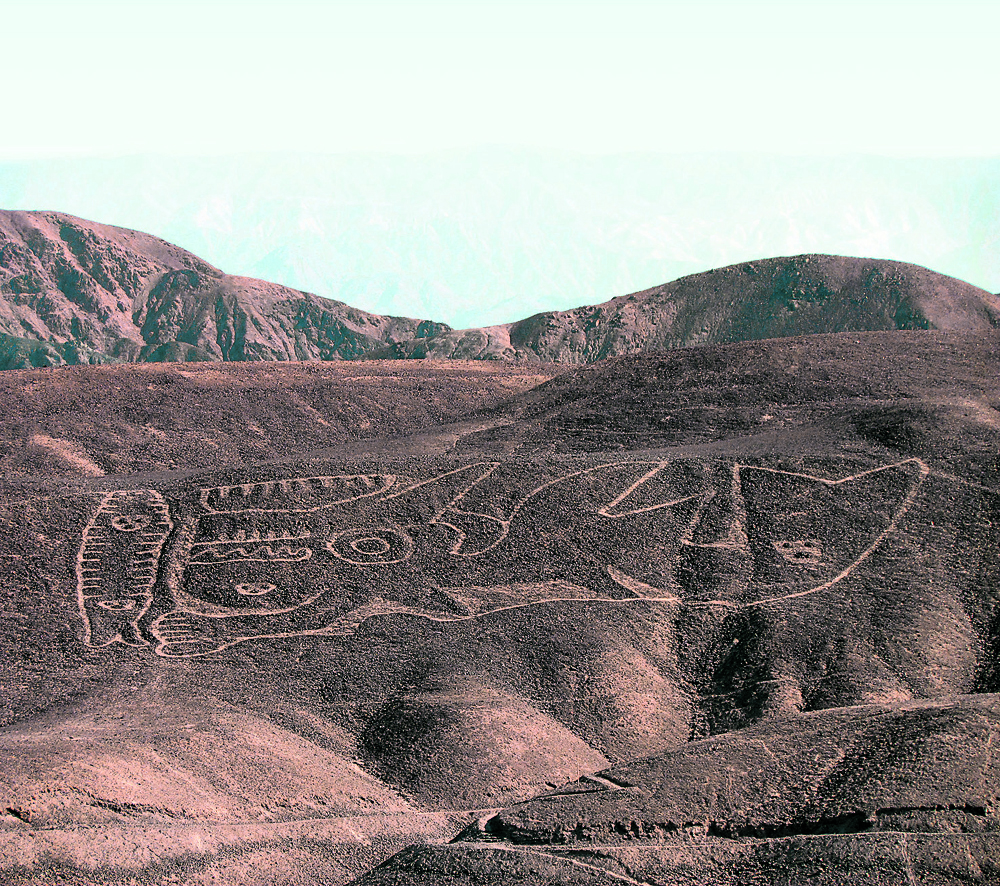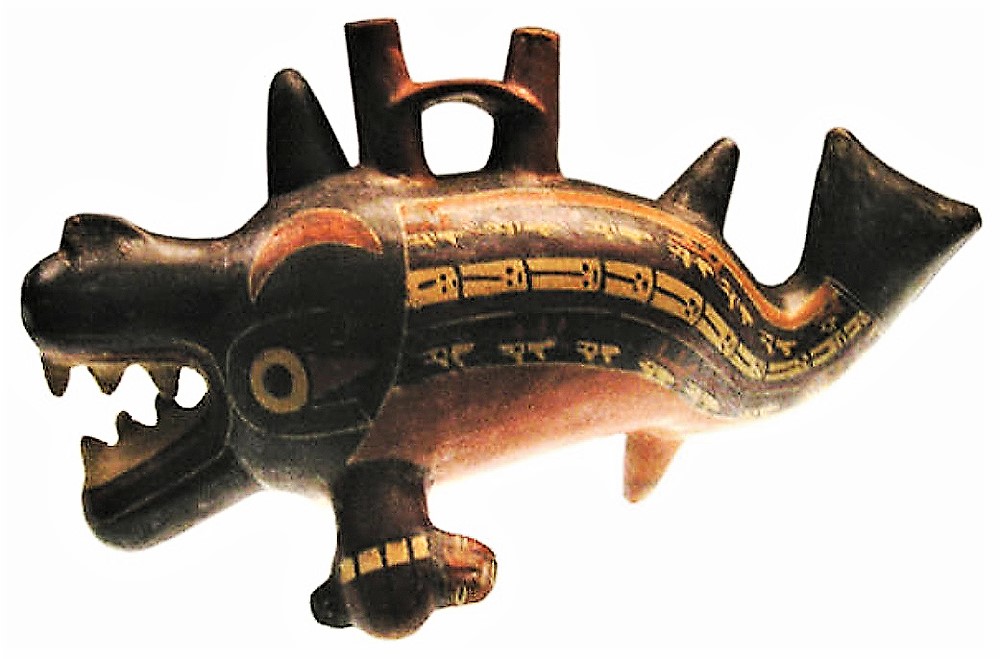


An article by Roberto Ochoa B. in Peru's La Republica and translated by Martin Barco - Fascinating orca geoglyph discovered in Palpa - reports on the rediscovery of the enormous geoglyph depicting an orca.

The orca geoglyph rediscovered in Palpa. Image: Johny Isla Cuadrado/La Republica.
The archaeological findings in the Nasca and Palpa deserts do not cease to attract worldwide attention. Attention is now focused on the geoglyph depicting an orca, a cetaceous present in the iconography of the Nasca culture. It was considered a marine deity and is often depicted in the ancient pottery and ceramics of Peru. It is considered one of the oldest and most enigmatic figures on the Palpa-Nasca route.

An element of the iconography of the Nasca culture. Image: Johny Isla Cuadrado/La Republica.
It was first discovered in the 1960's by German archaeologists, but during a restoration and research project on the Nasca and Palpa geoglyphs, an archaeological team led by Johny Isla Cuadrado, head of the Ica region's branch of the Ministry of Culture, the material in Germany revealed an image of the orca geoglyph, but with only scant records of it in the Peruvian inventory. Its location and dimensions were not accurate, which is why it has taken so long to locate. The geoglyph was considered lost.
The huge geoglyph, roughly 60 metres long and 25 metres wide, is engraved on a hillside located in the Palpa in the Ica region of Peru, an area explored and researched by the late archaeologist Maria Reiche. In the 1990's Markus Reindel and Johny Isla discovered up to 1000 geoglyphs in the Palpa valley, some of which are 400 metres in length.
Orca geoglyph rediscovered in #Peruhttps://t.co/IoClYWlYjt #archaeology #Nazca #orca pic.twitter.com/e5ece5Lb6q
— Bradshaw Foundation (@BradshawFND) November 15, 2017
Isla states that unlike the Nasca Lines the Orca geoglyph is depicted on a hillside, suggesting that it is one of the earliest geoglyphs in this area. Indeed, most of the Palpa geoglyphs were created on hillsides, thought to face the valleys below, and in so doing designate them as sacred areas. New research at the University of Yamagata in Japan indicates that the geoglyphs may have been made and used by multiple cultures for many reasons, hence the variety.
Palpa & Nasca are neighboring provinces, both located in the Ica region. The geoglyps of Nasca and Palpa, distributed in an area of roughly 450 sq km, belong to the Nasca Culture. The Palpa geoglyphs are considered to be the oldest. The Paracas culture, an Andean society between approximately 800 BC and 100 BC, with an extensive knowledge of irrigation and water management and significant contributions in the textile arts, preceded the Nasca Culture, which flourished from roughly 100 BC to 800 AD.
This remarkable geoglyph is endangered, however, due to land traffickers, a problem that is affecting the entire Palpa site. The land traffickers consider the area as fallow land, which they have claimed to have purchased, despite it belonging to the Peruvian State.
See more on the rock art of Peru:
http://www.bradshawfoundation.com/peru/index.php
by Bradshaw Foundation
Friday 09 August 2024
by Bradshaw Foundation
Wednesday 24 July 2024
by Bradshaw Foundation
Thursday 04 July 2024
by Bradshaw Foundation
Monday 01 July 2024
by Bradshaw Foundation
Wednesday 20 March 2024
by Bradshaw Foundation
Tuesday 13 February 2024
by Bradshaw Foundation
Tuesday 13 February 2024
by Bradshaw Foundation
Thursday 01 February 2024
by Bradshaw Foundation
Tuesday 28 November 2023
by Bradshaw Foundation
Thursday 23 November 2023
by Bradshaw Foundation
Monday 20 November 2023
by Bradshaw Foundation
Tuesday 31 October 2023
by Bradshaw Foundation
Thursday 26 October 2023
by Bradshaw Foundation
Wednesday 20 September 2023
by Bradshaw Foundation
Monday 17 July 2023
by Bradshaw Foundation
Sunday 09 July 2023
by Bradshaw Foundation
Friday 09 August 2024
by Bradshaw Foundation
Wednesday 24 July 2024
by Bradshaw Foundation
Thursday 04 July 2024
by Bradshaw Foundation
Monday 01 July 2024
by Bradshaw Foundation
Wednesday 20 March 2024
by Bradshaw Foundation
Tuesday 13 February 2024
by Bradshaw Foundation
Tuesday 13 February 2024
by Bradshaw Foundation
Thursday 01 February 2024
by Bradshaw Foundation
Tuesday 28 November 2023
by Bradshaw Foundation
Thursday 23 November 2023
by Bradshaw Foundation
Monday 20 November 2023
by Bradshaw Foundation
Tuesday 31 October 2023
by Bradshaw Foundation
Thursday 26 October 2023
by Bradshaw Foundation
Wednesday 20 September 2023
by Bradshaw Foundation
Monday 17 July 2023
by Bradshaw Foundation
Sunday 09 July 2023
Friend of the Foundation











